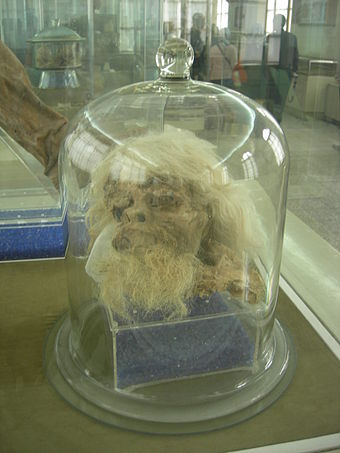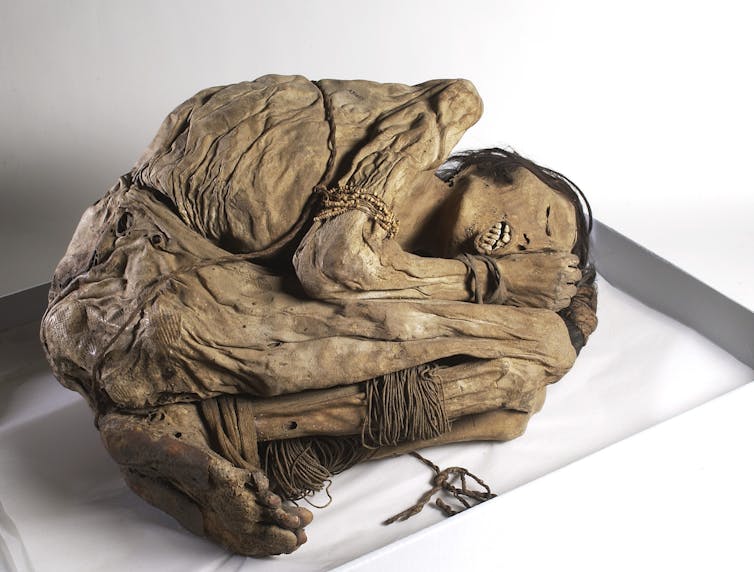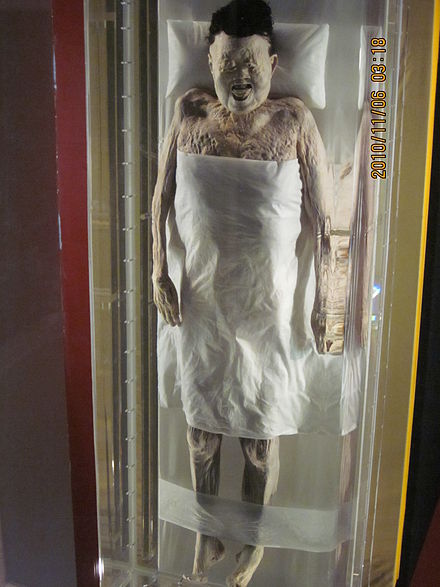mummy - pannous/hieros GitHub Wiki
𓀿 Mummy (sˁḥ) zaher Sarmh Charm Saḩar?
𒄠𒈠𒄠 am-ma-am "jar" ⇔ a mummy ?
The English word mummy is derived from medieval Latin mumia, a borrowing of the medieval Arabic word mūmiya (مومياء) and from a Persian word mūm (wax/bitumen). Really?
𓏠𓈖𓇋𓐪𓁀 'die' ⇔ Memnon, Amun, muer[death] ?
Natural mummies Ötzi and in Sahara ≥ 3500 BC.
Deliberate mummification became an integral part of the rituals for the dead beginning as early as the 2nd dynasty (about 2800 BC). New research of an 11-year study by University of York, Macquarie University and University of Oxford suggests mummification occurred 1,500 years earlier than first thought, thus 4300BC!
Asian mummies are almost exclusively considered to be unintentional mummifications.
Tarim Basin.
The dry desert climate of the basin proved to be an excellent agent for desiccation. For this reason, over 200 Tarim mummies, which are over 4,000 years old, were excavated from a cemetery in the present-day Xinjiang region.[49] The mummies were found buried in upside-down boats with hundreds of 13-foot long wooden poles in the place of tombstones.[49] DNA sequence data[50] shows that the mummies had Haplogroup R1a (Y-DNA) characteristic of western Eurasia in the area of East-Central Europe, Central Asia and Indus Valley.[51] This has created a stir in the Turkic-speaking Uighur population of the region, who claim the area has always belonged to their culture, while it was not until the 10th century when the Uighurs are said by scholars to have moved to the region from Central Asia.

Siberian Ice Maiden
known as Princess Ukok, the mummy was dressed in finely detailed clothing and wore an elaborate headdress and jewelry. Alongside her body were buried six decorated horses and a symbolic meal for her last journey.[58] Her left arm and hand were tattooed with animal style figures, including a highly stylized deer.[57]
A different mummy was marked with tattoos of two monsters resembling griffins, which decorated his chest, and three partially obliterated images which seem to represent two deer and a mountain goat on his left arm.[57]
Europe
The European continent is home to a diverse spectrum of spontaneous and anthropogenic Bronze Age mummies.
http://theconversation.com/solved-the-mystery-of-britains-bronze-age-mummies-48475
The radiocarbon dates from one of the skeletons were older than the dates obtained from the sediments at the burial sites. This suggested that the bodies may have been buried centuries after they had died. A thorough physical examination, together with DNA analysis, showed that both skeletons had actually been constructed from the mummified parts of several individuals. Bones looked like they had been eroded by acid. Yet they were buried in alkaline shell sand. In contrast, Bronze Age mummies from Kent were discoloured in a way which suggested that they had been burnt. So they may have been preserved by being smoked over a fire.

Mexico
Intentional mummification in pre-Columbian Mexico was practiced by the Aztec culture. These bodies are collectively known as Aztec mummies.
See PIE for red haired mummies in egypt.
